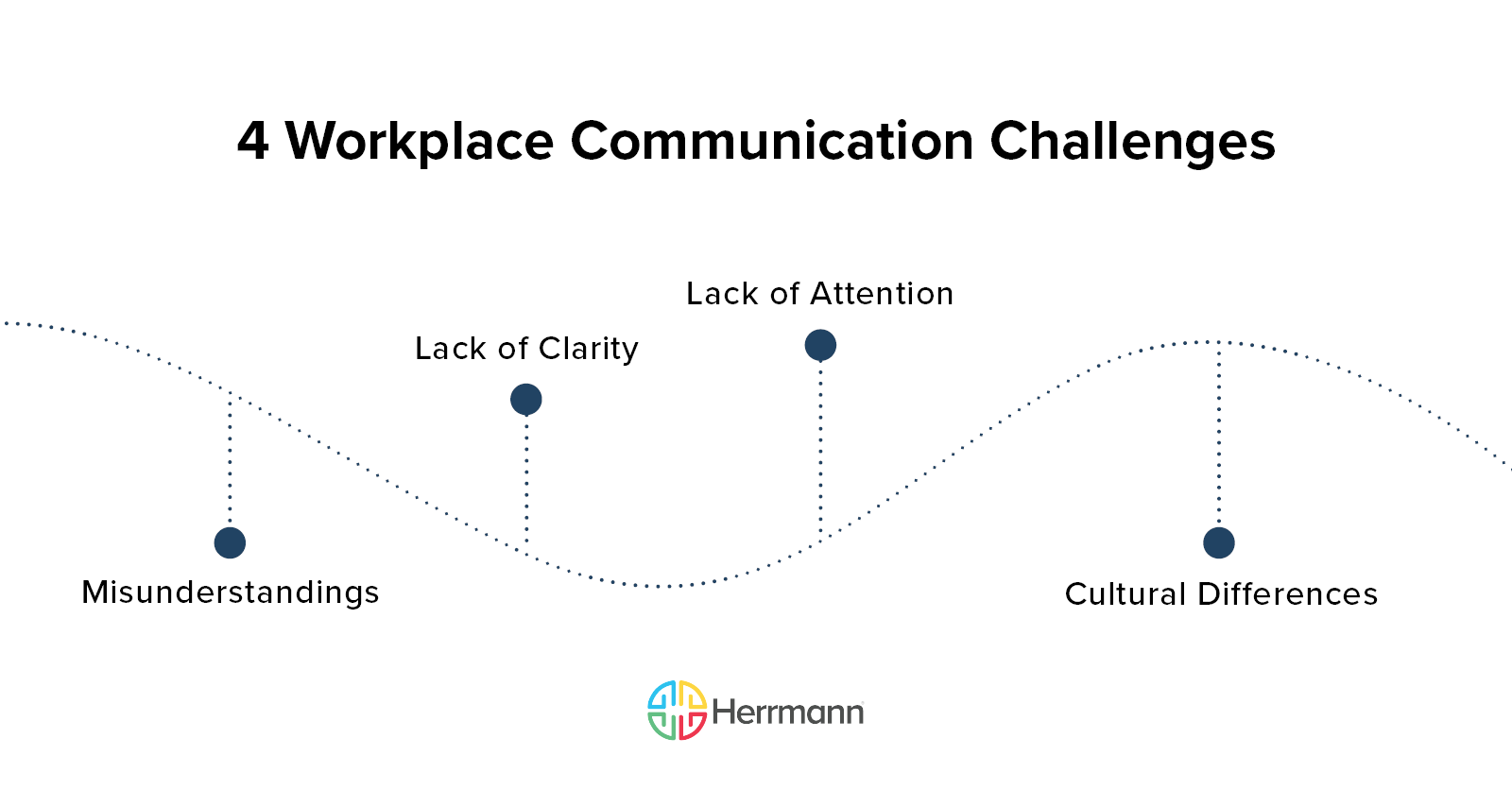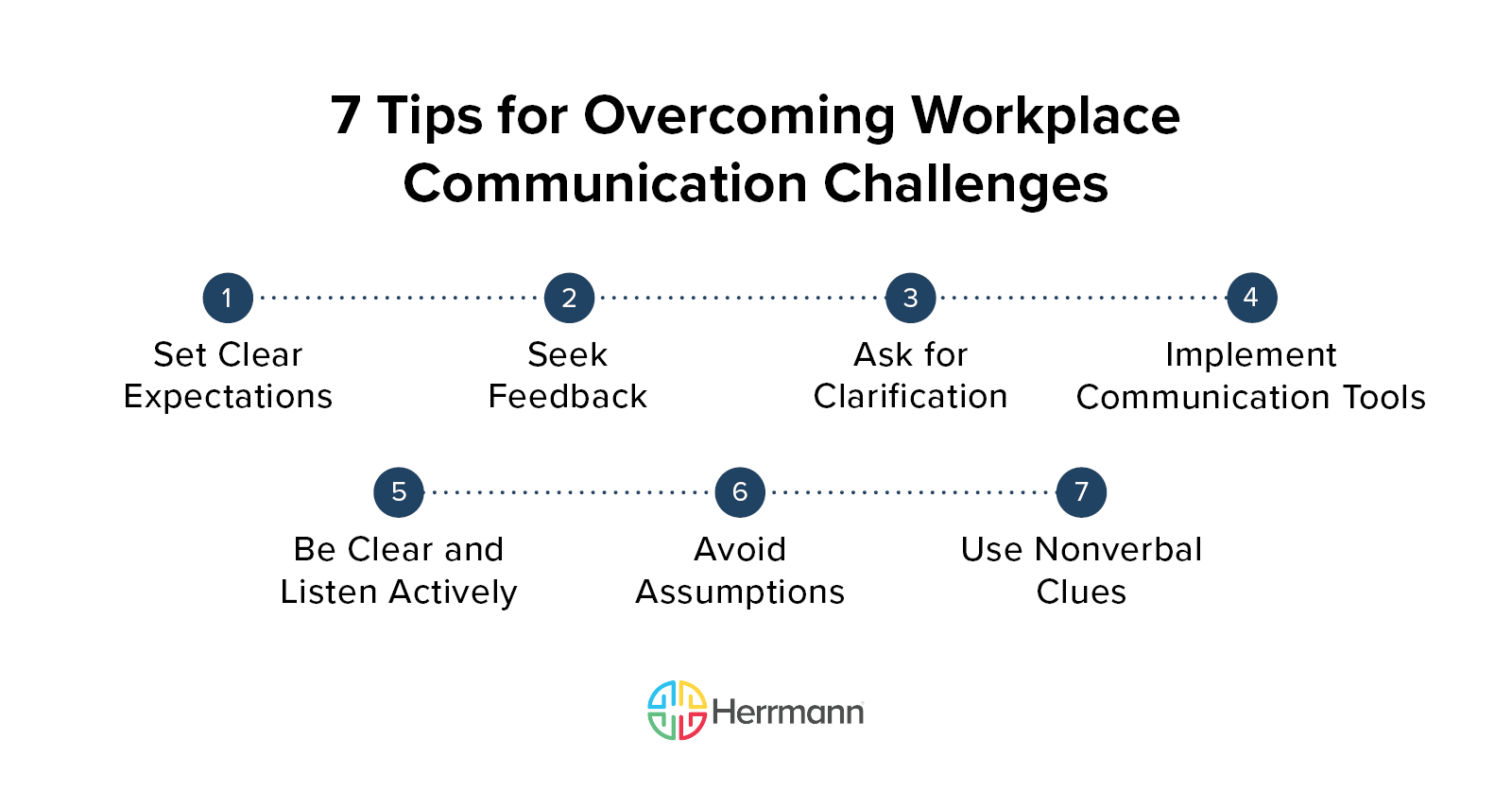Every team invariably runs into communication issues in the workplace. No matter the cause — a language barrier, different communication styles, or simply a misunderstanding — effective teams must diagnose and overcome these communication challenges.
If you're struggling for effective ways to improve in-person and virtual communication on your team, you're not alone. The workplace has evolved dramatically in recent years. Teams are no longer confined to the office, with many organizations adopting hybrid or remote workforces. Flexible work and improved workplace technology enable teams to collaborate across great distances, but the methods of communication haven’t always kept up.
These workplace communication challenges can impact every level of your organization. According to research from Gallup, only 7% of U.S. workers feel strongly that their workplace’s communication is accurate, timely, and open.
Effective communication requires you to understand the root causes, remove barriers, and leverage the different thinking and communication preferences of your people. Learn more about common communication challenges, how your teams can overcome them, and how Whole Brain® Thinking can help.
4 Common Communication Challenges in the Workplace
There are a lot of reasons for communication problems at work. People’s backgrounds, experiences, and work styles influence how they express ideas, ask questions and the formats in which they prefer to communicate. Your people might also have different levels of communication skills. All of these factors can lead to misunderstandings and miscommunication.
One of the most frustrating things about work is trying to communicate with someone who just doesn't seem to understand you. Whether it's a colleague, client, or manager, problems with internal communications make it difficult to complete your work effectively and can hurt your job satisfaction and productivity. Teams that struggle to communicate will struggle to resolve conflict, innovate, and meet business goals.
Let’s explore common internal communications issues.
Misunderstandings
One of the primary reasons misunderstandings occur at work is because people have different assumptions, perspectives, and experiences. This can lead to miscommunication when people assume that others know what they are talking about or that others have the same perspective.
Misunderstandings also happen because of language barriers or because one person uses technical language, jargon, or slang that the other person isn’t familiar with. Another cause of misunderstandings is failing to recognize people’s different communication styles. If you prefer to communicate through written notes but someone else prefers to interact with verbal instructions, you might have trouble getting on the same page.
Lack of Clarity
Confusion and conflict arise when teams aren’t clear about what they are supposed to be doing or what’s expected of them. What creates a lack of clarity? Things like missing details, insufficient information, or unclear goals. Lack of clarity also makes feedback more difficult, affecting people’s quality of work and ability to improve.
Lack of Attention
There are a few reasons why lack of attention leads to internal communication challenges. First, when people don’t pay attention, they don’t fully listen to what’s being said. This can lead to them missing pertinent information or details. At best, this leads to workflow problems, but acting without the right information can be catastrophic — for example, if inattention leads to product defects or unsecured work environments with physical risks, such as construction sites.
When people don’t pay attention or struggle to do so because of outside factors, they’re less likely to complete tasks correctly or make timely, sound decisions. Lack of attention also complicates relationships with co-workers. If people don’t pay attention to each other, they can’t connect and build trust, much less get to understand how other people think.
Cultural Differences
Sign up to our newsletter for the latest insights
What one culture may consider rude or inappropriate could be normal to another, so it’s important to stay open-minded and avoid assumptions. Cultural differences also include differences between norms at companies, industries, and job roles, which can affect communication within cross-functional teams or with external clients.

7 Effective Tips for Overcoming Communication Challenges in the Workplace
Whether you struggle to communicate with your boss, team, or clients, effective communication is essential to the success of any workplace. Communication issues can lead to misunderstandings, missed deadlines, and a general feeling of frustration.
Here are seven tips for workplace communication that aligns and empowers your people.
Set Clear Expectations and Goals
Setting clear expectations is vital to overcoming workplace communication barriers. When people know their roles and what’s expected of them, they can focus on what they do best and avoid misunderstandings or confusion.
One way to do this is by sharing your Whole Brain® Thinking preferences to help team members better understand how everyone thinks and how they work best. With that baseline of understanding and trust, you can move through goal-setting exercises more effectively and use people’s preferred communication styles to confirm they understand the expectations.
Seek Feedback and Address Concerns
By seeking feedback and addressing concerns, employees can more effectively identify potential areas of misunderstanding and correct them before they cause problems. Addressing concerns early on can help prevent them from becoming larger issues that are more difficult to resolve.
When using Whole Brain® Thinking to do a walk-around, you can address concerns in multiple ways based on people’s thinking preferences. For example, C Quadrant (Red) thinkers are concerned about interpersonal issues — wanting to know how the work will affect people. The D Quadrant (Yellow) is a great opportunity to talk about “big picture” concerns.
Ask for Clarification When Needed
A major cause of workplace communication issues is when people are afraid to seek clarification. This can happen in workplaces where people don't want to appear uninformed or rock the boat. But when people don’t ask for clarification and push forward with their work, your organization can suffer from much bigger problems down the road.
When you feel unclear about something, ask for clarification. Encourage your teams to do the same by emphasizing the value of questions, curiosity, and cognitive diversity instead of promoting a culture where people pretend to know everything.
Likewise, train your managers to watch for signs that their message isn’t being received effectively. People sometimes telegraph their confusion or frustration, but not always. A lack of engagement or reduced productivity, for example, may indicate that your team isn’t understanding or aligned with company objectives.
Implement the Right Communication Tools
Having the right tools in place is an important step in improving workplace communication issues. When employees communicate with each other easily and quickly, they can resolve misunderstandings or disagreements while getting to understand each other’s thinking preferences better.
The right tools help improve productivity and encourage healthier workplace communication. They include communication resources such as software, project management tools, and the hardware required for a webinar or phone call.
Communication tools can also include methods that help you better understand your team and its needs. When you have insights into how your employees think and share ideas, you can adapt your style to help foster good communication. Activities such as regular one-on-one and team meetings, constructive and positive feedback, individual and team assessments, and performance reviews are great opportunities to learn more about your team.
Be Clear and Listen Actively
When communicating with others, it's important to be clear and concise. This means being respectful and avoiding jargon. Make sure that your message is clear and that you're not overwhelming the other person with too much information.
Active listening is a key communication skill to combat poor communication. When somebody else is speaking, make an effort to listen to what they're saying. This means paying attention, asking questions, and offering feedback.
Avoid Assumptions
The Whole Brain® Thinking model can help you overcome your assumptions and grow beyond what you know. Try something new and push the boundaries of what you know. Flip your assumptions: What if the opposite happens? Ask questions: Instead of assuming you have the answers, ask questions. Be a curious learner seeking the truth rather than a “knower” who doesn’t inquire further.
Use Nonverbal Cues
Nonverbal cues such as body language and tone of voice can be just as important as the words we use when communicating with others. Pay attention to your nonverbal cues and how the other person might interpret them. For example, people who are introverted and with a preference for C Quadrant (Red) thinking are particularly likely to express themselves through nonverbal communication.

The Impact of Technology on Communication in the Workplace
More than ever, businesses use technology to improve communication across teams, regardless of their location.
Asynchronous communication can help provide flexibility and more time for effective workplace communication, and many modern tools and communication channels are built with this in mind. For example, email enables colleagues to communicate with clear and concise messaging without the need for an immediate response. Project management tools also can be a great fit for this type of communication.
Instant messaging and video conferencing are effective communication tools with a more instantaneous approach to response and engagement. Social media platforms are a way to communicate with the world at large. Virtual reality and other emerging technologies will continue to influence how, where, and why we communicate.
Remote and hybrid work also pushed businesses to focus on effective virtual communications in recent years. Organizations can hire top talent regardless of location, time zone, and other considerations. With seemingly unlimited tools to help share your message, remember to provide context and set expectations for your communication. Even the best technology requires people who understand how to use it and are engaged with the tools.
The Key to Successful Communication in the Workplace
Communication isn’t easy, and it’s an ongoing challenge for teams and organizations alike. But communicating effectively is a skill your teams and leaders can learn. Start by setting clear expectations, seeking feedback, and asking for clarification. Then, make sure you use the right technology.
When you address communication issues in the workplace and empower your people, you’ll see the results in improved communication, workflows, thinking, and results.
An effective communication strategy is essential for success, but it can be a challenge for businesses of all sizes. Discover how to improve communication at work.


.png?width=1200&name=Featured%20(1).png)









